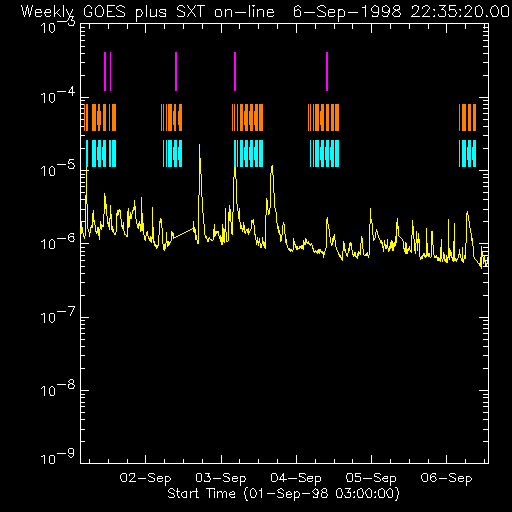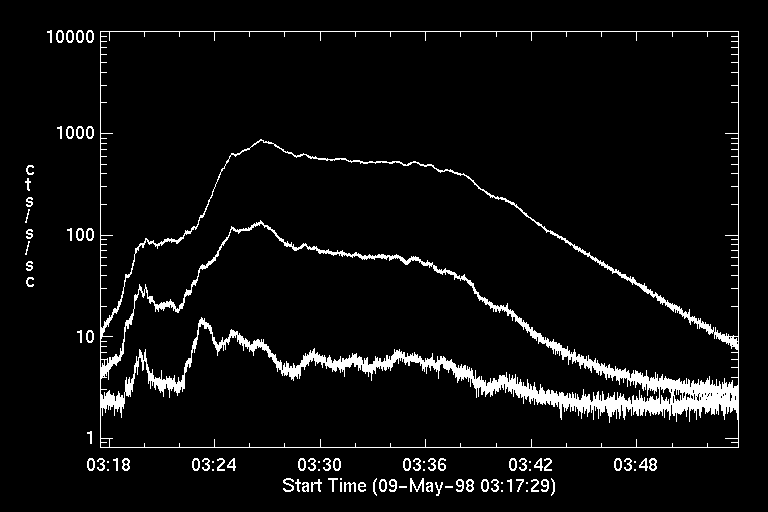
(Week 36, 1998)
The Soft X-ray Telescope continued to be working without problems, except for one SEU. The Meudon/Tenerife campaign (mostly to observe filaments inside and outside active regions) started on 4 September, we participated in the coordinated observations of AR 8323. This active region became bright and quite big (1300 millionth), but its flare activity has not been high. In addition, a total of 11 numbered active regions were seen this week, and AR 8319 was also bright. See the weekly operations report for details. The GOES level was increasing due to AR 8293 and AR 8296, and several C class flares occurred during the second half of the week. As usual, the GOES time series for the week is shown below. Click it for enlargement.

In the display above (click to enlarge), the colored lines show the times of SXT images that currently are on-line at ISAS. The purple lines are flare mode. The gaps will be considerably reduced when the NASA telemetry arrives and gets reformatted. For a summary index listing of the weekly science reports, click here.
From a two-week period starting late April 1998, there were many intense flares from AR 8210, and several of them were proton flares according to interplanetary observations. BATSE data for those flares show their spectra progressively hardening (Alan Kiplinger). One such flare was the one on 9-May-98. This flare was well observed by Yohkoh. Its hard X-ray time profiles from HXT are shown below. Their energy ranges are (from top to bottom) 14-23 keV, 23-33 keV and 33-53 keV. (Click on the picture to see a larger, more visible, version.)

Note that the lowest curve is quite different from the highest curve. Also, the variations are not very sharp. These may be indications of something different from impulsive flares. Although yohkoh workers feel that they have not observed what is called a ``type-C'' flare, a nomenclature from the Hinotori observations, the present flare may belong to that category and similar flares have been observed many times, especially in this cycle.
It is reasonable to speculate that a flare of this type is eruptive. This particular flare, which took place on the west limb, was indeed eruptive. Please look at the following movie. The FOV is 5.2 arcmin.
The disk transit of this flare-productive reigion is shown in the following movie. The FOV is 10.4 arcmin.
Note that this event was also observed at Nobeyama Observatory .